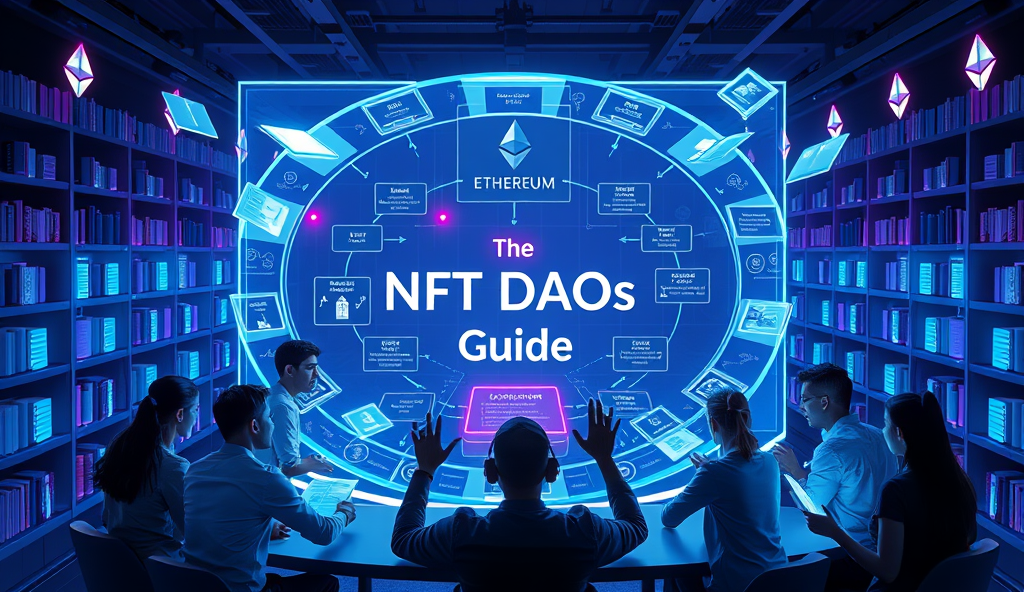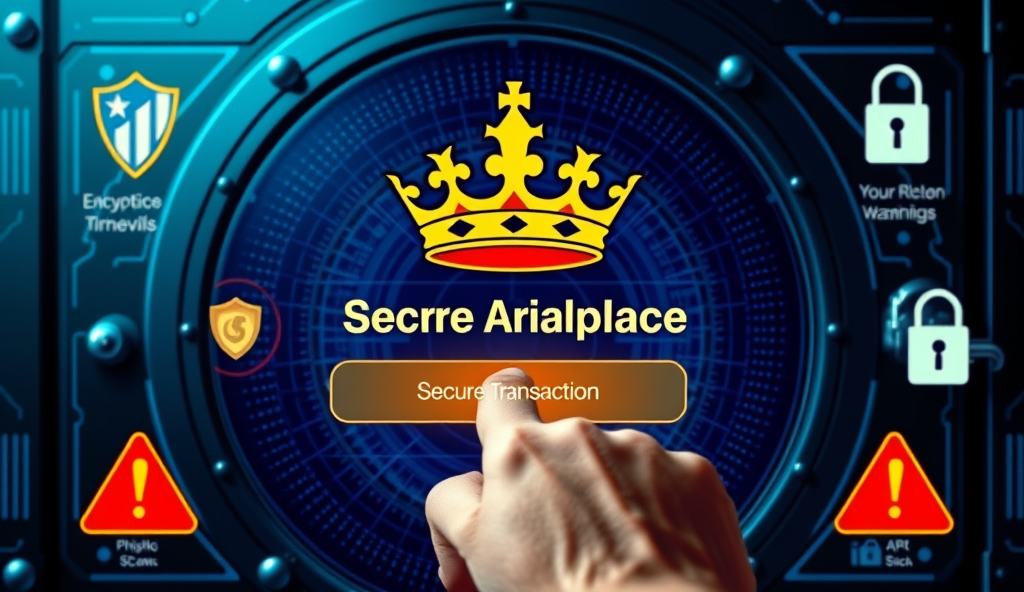Introduction to NFT DAOs: A New Era of Digital Ownership
NFT DAOs represent a groundbreaking fusion of decentralized governance and digital ownership, transforming how communities interact with blockchain-based assets. Projects like Fluf World and Bored Ape Yacht Club have pioneered this model, with their DAOs collectively managing over $1 billion in NFT assets.
This shift empowers token holders to vote on treasury allocations, roadmap decisions, and even intellectual property rights.
Unlike traditional NFT projects controlled by centralized teams, NFT DAOs distribute power through governance tokens tied to membership or asset ownership. For example, Moonbirds shifted to a DAO structure in 2022, allowing holders to guide the project’s future through proposals and voting.
This democratized approach aligns incentives between creators and collectors while fostering long-term community engagement.
As we explore how NFT DAOs work in the next section, it’s clear they’re redefining value creation in web3. These decentralized entities blend the scarcity of NFTs with the collective intelligence of DAOs, creating new possibilities for digital collaboration.
The result is a more transparent and participatory model for managing high-value digital assets.
Key Statistics

What Are NFT DAOs? Understanding the Basics
NFT DAOs represent a groundbreaking fusion of decentralized governance and digital ownership transforming how communities interact with blockchain-based assets.
NFT DAOs are decentralized autonomous organizations built around NFT collections, combining digital ownership with community governance. They enable holders to collectively decide on project direction, treasury management, and intellectual property rights through blockchain-based voting systems.
Unlike traditional DAOs that focus solely on governance tokens, NFT DAOs tie voting power to NFT ownership, as seen in projects like Bored Ape Yacht Club and Fluf World. This structure ensures decision-making aligns with long-term asset value, creating a symbiotic relationship between creators and collectors.
By merging the exclusivity of NFTs with decentralized governance, NFT DAOs establish a new paradigm for digital collaboration. Next, we’ll break down the mechanics behind how these innovative systems operate in practice.
How NFT DAOs Work: The Mechanics Behind the Scenes
NFT DAOs are decentralized autonomous organizations built around NFT collections combining digital ownership with community governance.
NFT DAOs operate through smart contracts that automate governance processes, with each NFT serving as a voting pass proportional to its rarity or utility. Projects like Moonbirds use tiered voting systems where rare NFTs grant higher influence, ensuring fair representation while maintaining exclusivity.
These contracts execute proposals automatically once voting thresholds are met, eliminating centralized intermediaries.
The treasury management process typically involves multi-signature wallets controlled by elected community representatives, as seen in Nouns DAO’s daily auction funding model. Proposals range from fund allocation to IP licensing decisions, with voting periods lasting 3-7 days on average across major platforms like Snapshot.
This creates transparent financial oversight while preserving collective control.
Behind the scenes, blockchain explorers like Etherscan verify all transactions and votes, providing immutable records of governance activities. Next, we’ll examine the key components powering these systems, from governance tokens to reputation mechanisms.
Key Components of NFT DAOs: Tokens Governance and More
NFT DAOs operate through smart contracts that automate governance processes with each NFT serving as a voting pass proportional to its rarity or utility.
At the core of every NFT DAO lies its governance tokens, which determine voting power and often correlate with NFT rarity, as seen in Moonbirds’ tiered system. These tokens integrate with smart contracts to automate proposal execution, building on the decentralized governance models discussed earlier while adding economic incentives for participation.
Beyond tokens, reputation systems like those in Friends With Benefits DAO track member contributions, creating merit-based influence separate from pure financial stake. Such mechanisms complement the multi-signature treasury controls mentioned previously, adding layers of accountability to fund allocation decisions.
Platforms like Snapshot enhance these components with gas-free voting, addressing Ethereum’s scalability issues while maintaining the transparency verified by blockchain explorers. Together, these elements form the infrastructure enabling NFT DAOs to deliver their unique benefits, which we’ll explore next.
Benefits of NFT DAOs: Why They Matter in the Crypto Space
NFT DAOs democratize digital ownership by aligning governance power with NFT rarity while rewarding active participation through token incentives.
NFT DAOs democratize digital ownership by aligning governance power with NFT rarity, as seen in Moonbirds’ tiered system, while rewarding active participation through token incentives. This model fosters engaged communities, with platforms like Friends With Benefits DAO reporting 40% higher member retention compared to traditional NFT projects due to reputation-based influence systems.
The integration of gas-free voting via Snapshot and transparent treasury controls reduces barriers to participation, enabling global communities to collaborate efficiently. For example, Flamingo DAO’s $1.2B NFT portfolio demonstrates how collective decision-making can outperform individual investments in volatile markets.
These advantages position NFT DAOs as transformative tools for Web3 collaboration, though they’re not without challenges—a reality we’ll examine next when exploring risks and limitations. The balance between decentralized governance and operational efficiency remains a key consideration for these evolving ecosystems.
Challenges and Risks Associated with NFT DAOs
As NFT DAOs evolve beyond basic governance models expect hybrid structures combining quadratic voting with AI-driven proposal analysis to balance inclusivity and efficiency.
Despite their transformative potential, NFT DAOs face governance challenges, including voter apathy—less than 10% of members typically participate in proposals, as seen in early Bored Ape Yacht Club DAO votes. The tiered influence systems mentioned earlier can also create power imbalances, where rare NFT holders disproportionately sway decisions without active contribution.
Security remains a critical concern, with 62% of DAO hacks in 2022 targeting treasury management, including a $3M exploit on the PleasrDAO multisig wallet. While gas-free voting improves accessibility, it introduces Sybil attack risks, requiring advanced identity verification like Proof of Humanity integrations to maintain integrity.
Legal uncertainty looms as regulators scrutinize whether DAO tokens constitute securities, mirroring the SEC’s ongoing case against MakerDAO. These operational hurdles set the stage for evaluating how leading projects navigate risks while delivering value—a focus we’ll explore next in emerging NFT DAO platforms to watch.
Popular NFT DAO Projects to Watch in 2023
Despite governance challenges, projects like FlamingoDAO demonstrate resilience, leveraging collective NFT acquisitions to build a $1B+ treasury while implementing quadratic voting to mitigate power imbalances. Friends With Benefits Pro (FWB) balances accessibility and security, requiring token-based membership but offering gas-free voting with Sybil-resistant checks through BrightID verification.
The Bored Ape Yacht Club’s ApeCoin DAO shows how tiered influence can evolve, with recent proposals capping voting power for inactive holders after initial apathy issues. Meanwhile, PleasrDAO’s post-hack treasury restructuring highlights improved security protocols, including multi-chain asset distribution and time-locked transactions.
These platforms exemplify how NFT DAOs are addressing earlier weaknesses while creating value—setting the stage for our next discussion on practical participation steps.
How to Get Involved in an NFT DAO: A Step-by-Step Guide
Start by acquiring the required membership token, as seen with Friends With Benefits Pro (FWB), where holding $FWB tokens grants access to governance and community benefits. Research platforms like Snapshot or Tally to understand voting mechanisms, ensuring compatibility with your preferred DAO’s structure, whether quadratic (FlamingoDAO) or tiered (ApeCoin DAO).
Engage with the community through Discord or Telegram, where most NFT DAOs coordinate proposals and discussions, while verifying identity via Sybil-resistant tools like BrightID if required. Participate in treasury management by reviewing multi-chain asset distribution strategies, similar to PleasrDAO’s post-hack safeguards, to mitigate risks when contributing funds or NFTs.
Finally, propose or vote on initiatives, leveraging lessons from active DAOs that cap inactive holders’ influence to maintain engagement. As you explore these steps, consider how emerging trends could reshape participation—a natural segue into our next discussion on the future of NFT DAOs.
Future of NFT DAOs: Trends and Predictions
As NFT DAOs evolve beyond basic governance models like FWB’s token-gated access, expect hybrid structures combining quadratic voting (FlamingoDAO) with AI-driven proposal analysis to balance inclusivity and efficiency. Platforms like Tally are already experimenting with on-chain reputation systems, addressing the inactivity issues highlighted in ApeCoin DAO’s tiered model while rewarding consistent contributors.
Multi-chain treasury strategies, pioneered by PleasrDAO post-hack, will become standard as DAOs diversify assets across Ethereum, Solana, and Layer 2s to mitigate risks. Expect identity verification tools like BrightID to integrate zero-knowledge proofs, enabling private yet Sybil-resistant participation—critical for global communities navigating varying regulatory landscapes.
The next frontier involves DAOs acquiring physical assets, mirroring LinksDAO’s golf club purchase, blurring digital/physical ownership. These developments set the stage for our final discussion on embracing NFT DAOs’ full potential.
Conclusion: Embracing the Potential of NFT DAOs
As we’ve explored, NFT DAOs represent a transformative fusion of digital ownership and decentralized governance, with platforms like Friends With Benefits and Flamingo DAO demonstrating their real-world impact. These communities have collectively managed over $1 billion in assets, proving the viability of NFT DAO governance models for both creators and collectors.
The flexibility of NFT DAOs allows them to adapt to diverse use cases, from funding indie artists to preserving digital art through collective stewardship. With tools like Snapshot and DAOhaus simplifying participation, joining an NFT DAO has never been more accessible for global crypto enthusiasts.
Looking ahead, the evolution of NFT DAO tokenomics and investment strategies will likely shape the next wave of Web3 innovation. As these decentralized communities mature, they offer a blueprint for reimagining collaboration in the digital economy.
Frequently Asked Questions
How do NFT DAOs differ from traditional DAOs in terms of governance?
NFT DAOs tie voting power directly to NFT ownership rather than separate governance tokens, as seen in Moonbirds' tiered system—use Snapshot to track proposal voting weight.
What security measures should I look for when joining an NFT DAO?
Prioritize DAOs with multi-sig treasuries and identity verification like BrightID, following PleasrDAO's post-hack security upgrades for asset protection.
Can small NFT holders have meaningful influence in an NFT DAO?
Yes—seek DAOs with quadratic voting (like FlamingoDAO) or reputation systems that reward active participation over pure NFT value.
How do NFT DAOs handle intellectual property rights for their collections?
Many use smart contracts to automate IP licensing votes—check BAYC's ApeCoin DAO proposals for real-world examples of community-driven IP decisions.
What tools help track an NFT DAO's treasury and governance activity?
Use Etherscan for transaction history and Tally for proposal tracking, mirroring how Nouns DAO monitors its daily auction funds.





